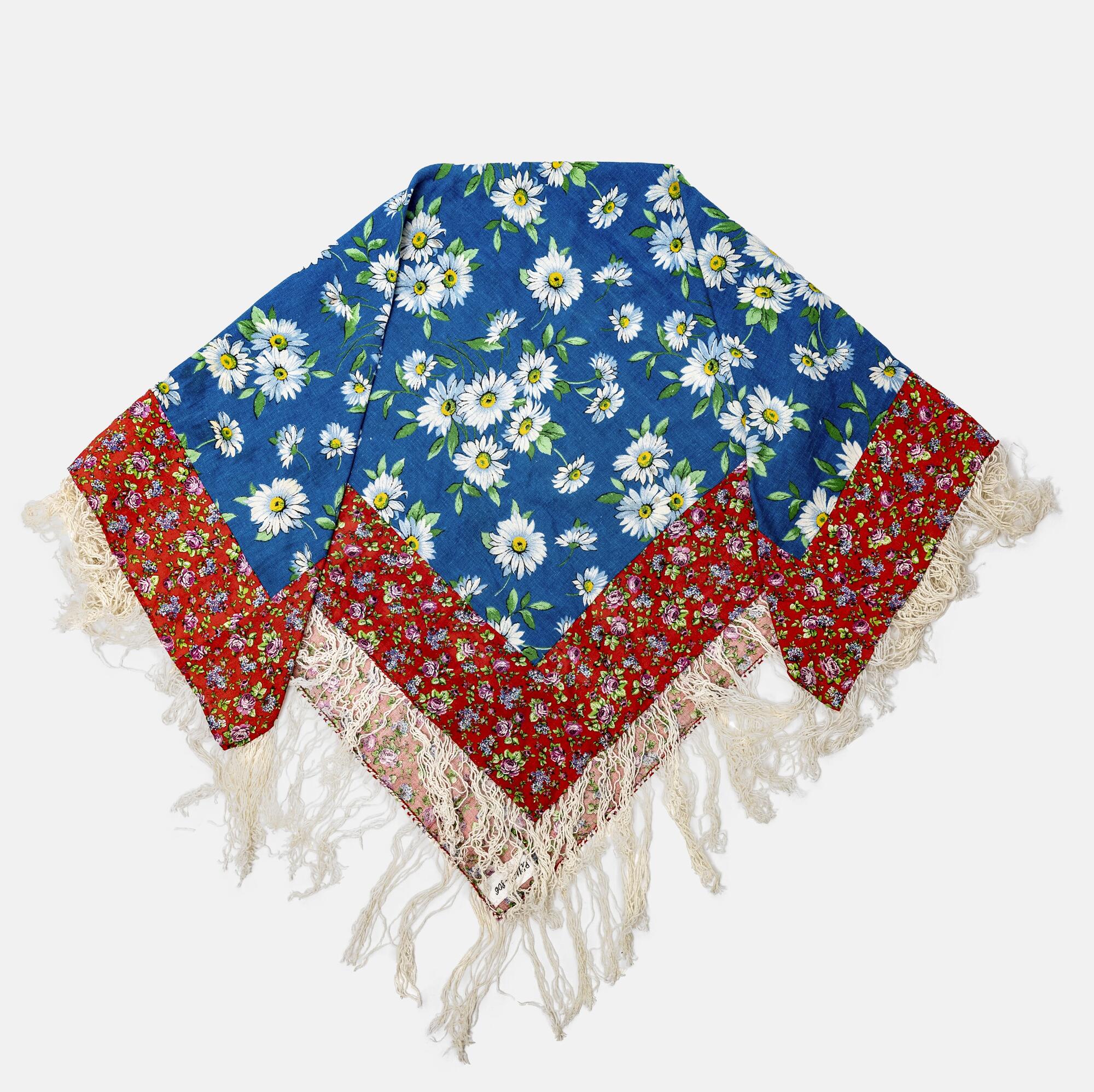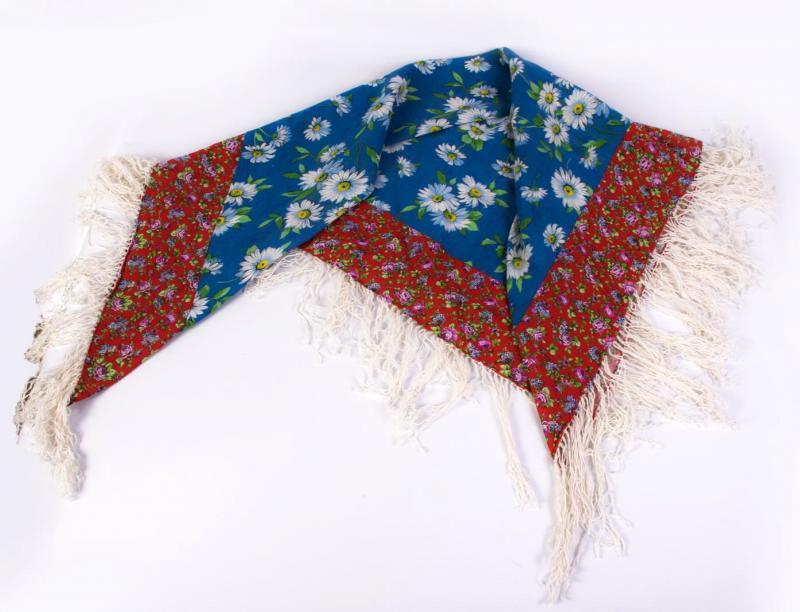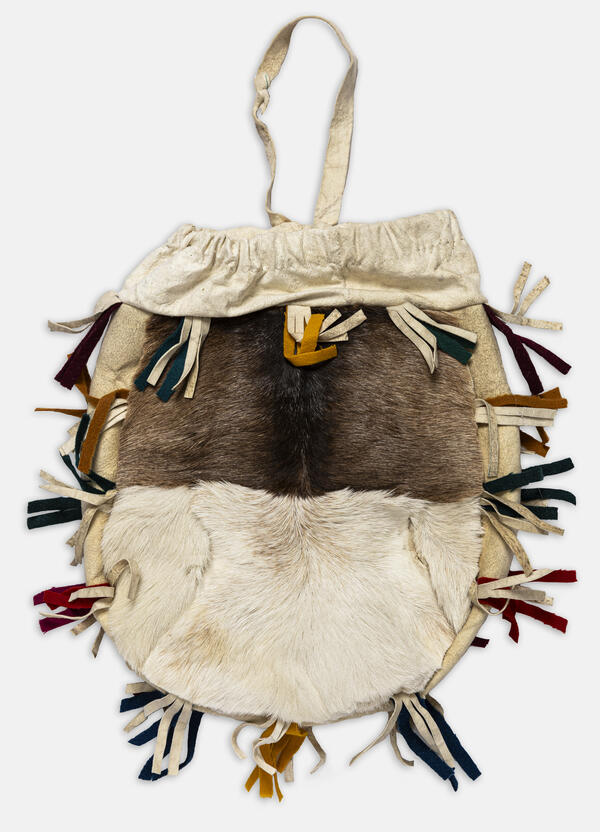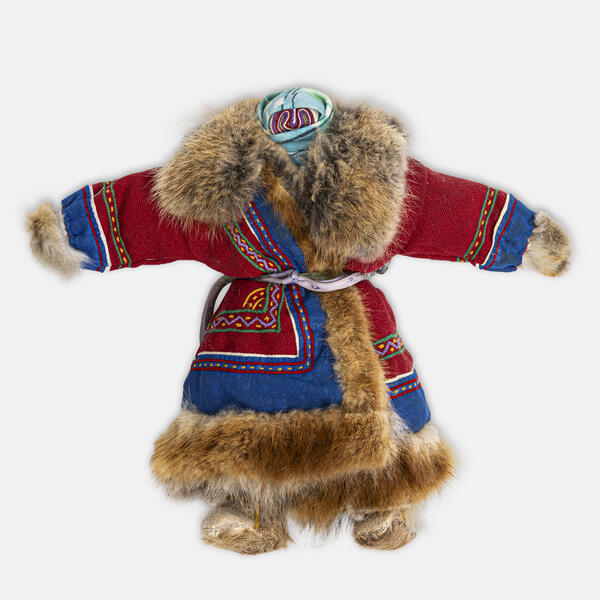A headscarf is one of the oldest women’s headdresses that is found in many cultures. In the Khanty language, it is called “sumintakh”. For the Khanty, the headscarf has always been a sacred object. As a symbol of femininity, it was used in all rituals, from weddings to funerals.
In the traditional cultures of the Ob Ugrians, the head and the heart were considered the sources of life, which is why the headscarf was associated with certain symbolic meanings. The manner of wearing a headscarf is closely connected with the Khanty practice of avoidance. A married woman used to wear a headscarf and hide her face from her husband’s older relatives, “avoiding” her father-in-law and brothers-in-law.
The first headscarf was put on the newborn’s head even before the fontanel closed. A headscarf was thrown over the cradle to protect the baby before it started teething. After that, a girl would receive her own headscarf, and from early childhood, she was taught to handle it with care. As she grew older, new headscarves were sewn or bought.
After a woman got married, she could no longer be seen with her hair uncovered. Because of that, the headscarf was also a symbol of marriage. It protected a woman from spoilage and misfortune and gave her peace of mind. The bride’s mother also covered her face with a headscarf from her son-in-law and his father. When entering a house, the men would cough to give the women time to put on their headscarves.
The ritual of avoidance is still preserved in national Khanty settlements. The national clothing of the Ob Ugrians developed over many centuries. Women were not allowed to violate the standards that were handed down from generation to generation.
The headscarf was also worn with loose, untied ends. In winter, women wore two or three headscarves, one over the other. The headscarf was always considered the most precious gift that could be presented to a woman, a token of respect and attention. During the matchmaking, the groom gave headscarves to the bride’s relatives — mother, grandmother, and sisters.
The headscarf from the collection of the
Ethnographic Museum of the Varyogan Village is made by hand using
factory-produced cloth. It is made of a square piece of dark blue fabric with
white daisies. It is surrounded by a border of red fabric with a fine
decorative pattern. The edge of the headscarf is tucked in and sewn. The
headscarf is decorated with handmade fringe — long tassels of cotton thread.





